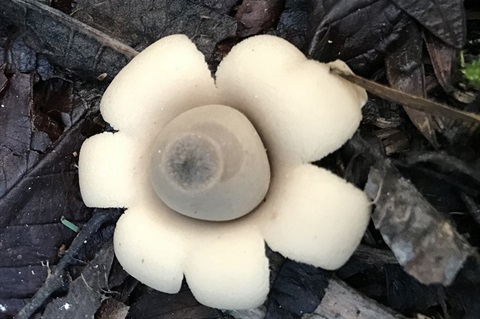Winter fungi offer up strange sights
Published on 05 July 2018

The winter fungi season has started, with clusters of unusual fungi such as ‘earthstars’ and ‘jelly babies’ keeping nature photographers spellbound during the colder months.
While these strange winter fungi fruits make for intriguing photos, the public is urged not to eat them or any other mushrooms found in Hobart’s bushland reserves. Death cap mushrooms, which can cause a slow and painful death, were reported for the first time in Tasmania in 2015.
The start of autumn is usually the most popular time for fungi lovers to go exploring, but mid-winter in drier forests can be just as enchanting.
The City of Hobart’s Bushcare team is out in local bushland reserves every weekend with volunteers, who are seeing some amazing fungi fruiting in our dry forests, including at Waterworks Reserve and along the Cascade Track.
One of the oddest looking winter fungi are earthstars, which they’re finding in clusters. They look like small, dried-out octopuses with big round puffball heads. The lightest rain drop is enough to open the pore of the puffball, releasing a cloud of spores into the air.
Another one to look out for is the jelly baby, which is often found fruiting from rotting old wood and is an extraordinary, almost luminescent yellow.
It is believed there are anywhere from 50,000 to 250,000 fungi species in Australia, but just 5 per cent have been described.
The City of Hobart Bushcare program provides an opportunity for the community to work with us to improve Hobart's bushland through bush regeneration, track development and maintenance, and community engagement. Bushcare also provides support to schools and other organisations undertaking community-based care of the city’s bushland.